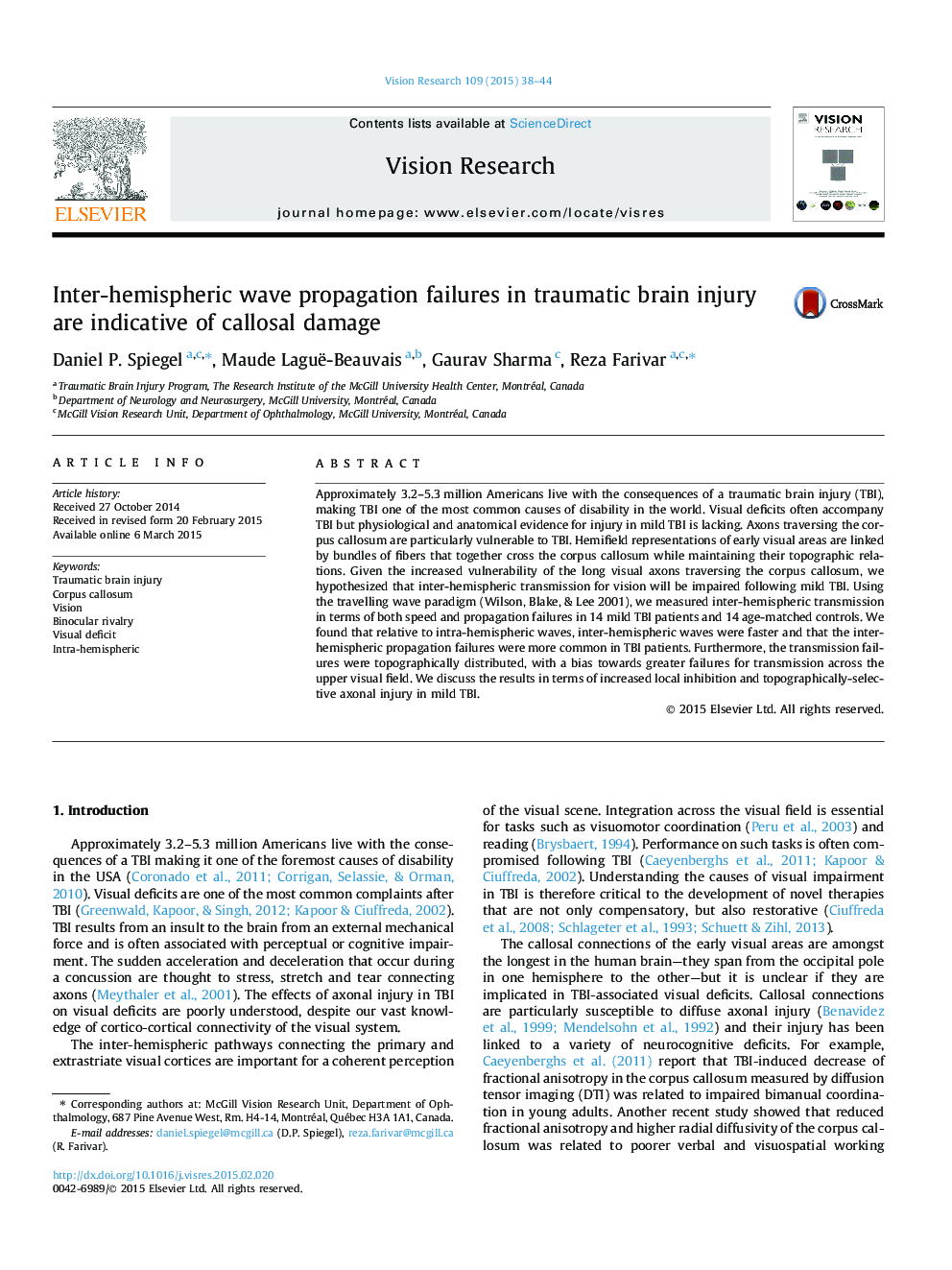| Article ID | Journal | Published Year | Pages | File Type |
|---|---|---|---|---|
| 6203242 | Vision Research | 2015 | 7 Pages |
â¢Inter-hemispheric transfer in traumatic brain injury was measured psychophysically.â¢Mild TBI results in a topographic pattern of inter-hemispheric transmission failure.â¢Spatial pattern of results is consistent with injury to the anterior splenium.
Approximately 3.2-5.3Â million Americans live with the consequences of a traumatic brain injury (TBI), making TBI one of the most common causes of disability in the world. Visual deficits often accompany TBI but physiological and anatomical evidence for injury in mild TBI is lacking. Axons traversing the corpus callosum are particularly vulnerable to TBI. Hemifield representations of early visual areas are linked by bundles of fibers that together cross the corpus callosum while maintaining their topographic relations. Given the increased vulnerability of the long visual axons traversing the corpus callosum, we hypothesized that inter-hemispheric transmission for vision will be impaired following mild TBI. Using the travelling wave paradigm (Wilson, Blake, & Lee 2001), we measured inter-hemispheric transmission in terms of both speed and propagation failures in 14 mild TBI patients and 14 age-matched controls. We found that relative to intra-hemispheric waves, inter-hemispheric waves were faster and that the inter-hemispheric propagation failures were more common in TBI patients. Furthermore, the transmission failures were topographically distributed, with a bias towards greater failures for transmission across the upper visual field. We discuss the results in terms of increased local inhibition and topographically-selective axonal injury in mild TBI.
